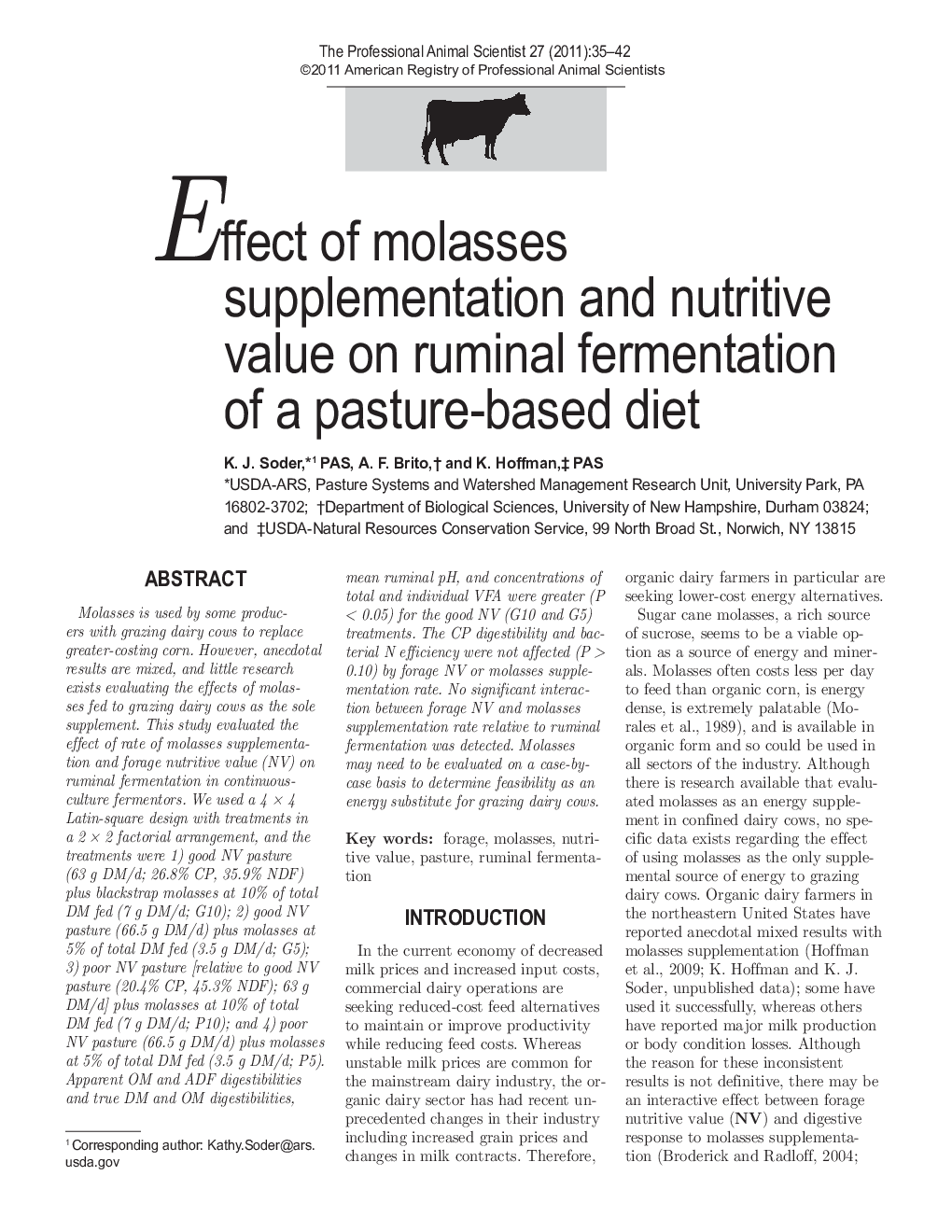| Article ID | Journal | Published Year | Pages | File Type |
|---|---|---|---|---|
| 2454235 | The Professional Animal Scientist | 2011 | 8 Pages |
Abstract
Molasses is used by some producers with grazing dairy cows to replace greater-costing corn. However, anecdotal results are mixed, and little research exists evaluating the effects of molasses fed to grazing dairy cows as the sole supplement. This study evaluated the effect of rate of molasses supplementation and forage nutritive value (NV) on ruminal fermentation in continuous-culture fermentors. We used a 4 Ã 4 Latin-square design with treatments in a 2 Ã 2 factorial arrangement, and the treatments were 1) good NV pasture (63 g DM/d; 26.8% CP, 35.9% NDF) plus blackstrap molasses at 10% of total DM fed (7 g DM/d; G10); 2) good NV pasture (66.5 g DM/d) plus molasses at 5% of total DM fed (3.5 g DM/d; G5); 3) poor NV pasture [relative to good NV pasture (20.4% CP, 45.3% NDF); 63 g DM/d] plus molasses at 10% of total DM fed (7 g DM/d; P10); and 4) poor NV pasture (66.5 g DM/d) plus molasses at 5% of total DM fed (3.5 g DM/d; P5). Apparent OM and ADF digestibilities and true DM and OM digestibilities, mean ruminal pH, and concentrations of total and individual VFA were greater (P < 0.05) for the good NV (G10 and G5) treatments. The CP digestibility and bacterial N efficiency were not affected (P > 0.10) by forage NV or molasses supplementation rate. No significant interaction between forage NV and molasses supplementation rate relative to ruminal fermentation was detected. Molasses may need to be evaluated on a case-bycase basis to determine feasibility as an energy substitute for grazing dairy cows.
Related Topics
Life Sciences
Agricultural and Biological Sciences
Animal Science and Zoology
Authors
K.J. PAS, A.F. Brito, K. PAS,
